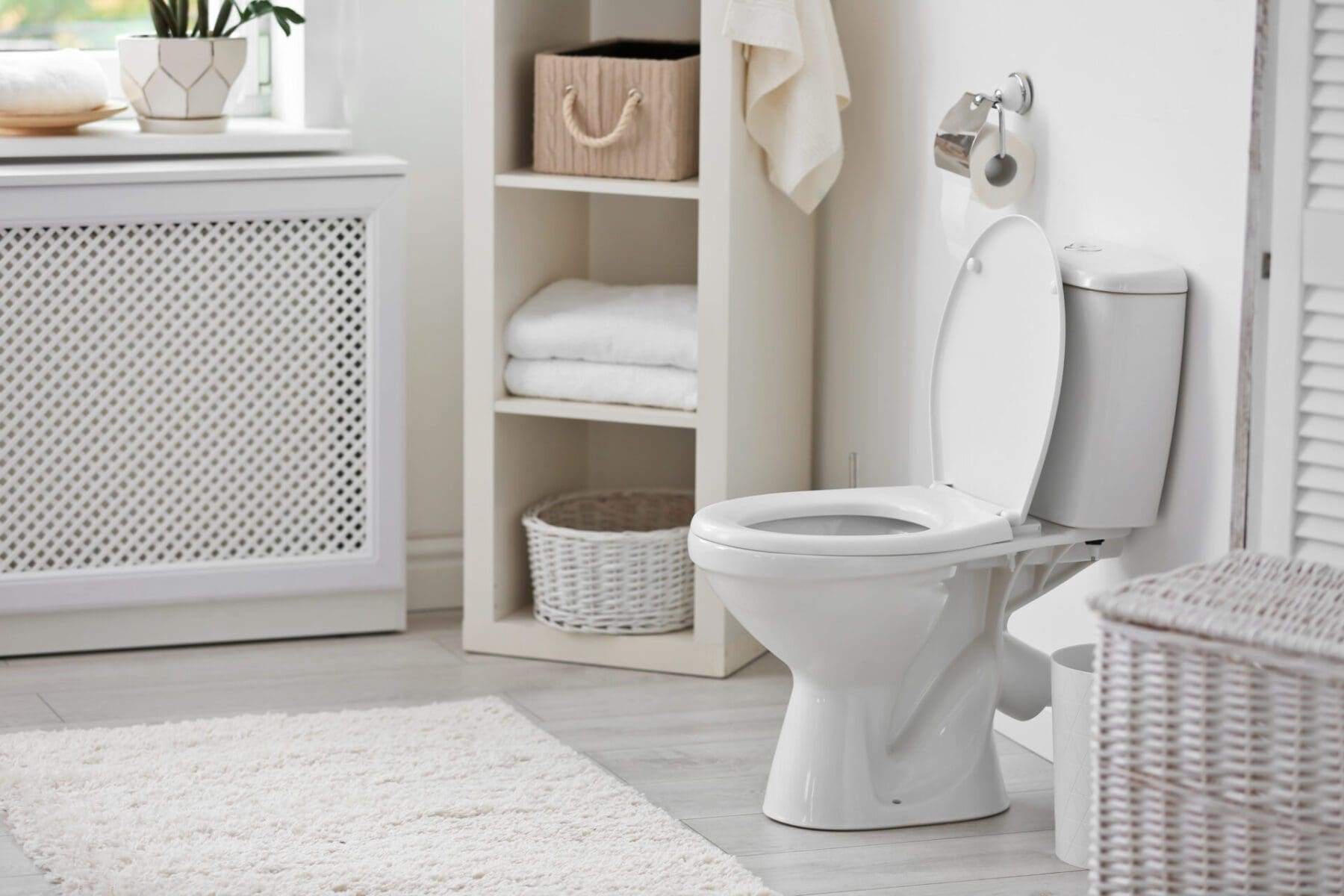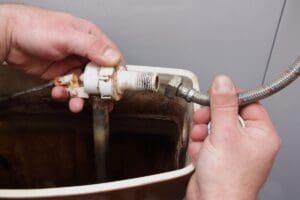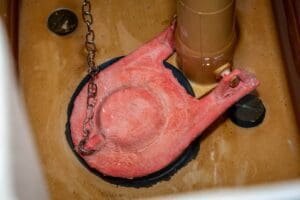
What To Do If Your Toilet Won’t Stop Running
Toilets are one of those everyday conveniences we don’t usually have to think much about.
When an issue arises, such as a toilet that won’t stop running, it can cause homeowners no small amount of frustration.
Even though toilets are complicated systems, sometimes there will be an easy solution to the problem.
In this post, you will learn the tools you need to try and fix a running toilet. Call A-Absolute when you need us to fix a running toilet. You will also learn the steps you should attempt on your own and when you will need to turn to a professional.
If you try each of these steps without success, don’t ignore a toilet that runs for very long. Instead, contact the professionals at A-Absolute for an appointment or consultation with any questions.
Toilet Running
Toilets that won’t stop running are more than a simple annoyance. Toilets that constantly run can lead to excessive water use and a more expensive water bill.
If you have a running toilet, here is what you can do on your own. Have the following items on hand before you get started:
- Rubber gloves
- Cutting pliers
- Phillips and flathead screwdrivers
- Replacement toilet valve
- Replacement flapper
How To Fix a Running Toilet
Here are the four steps to address a running toilet on your own.
You will want to look at the fill tube, float, flush handle/flapper chain, and flapper.
Check the Fill Tube

Start by lifting the tank lid and checking the fill tube. This short tube connects the fill valve to the overflow tube. This flexible tube sends water down the overflow tube to refill the toilet bowl after a flush. The toilet bowl will continuously run if the fill tube has come loose and isn’t feeding water into the overflow tube.
Put on your rubber gloves and reattach the tube if needed. The fill tube should rise about one inch higher than the overflow tube and fit easily inside. Flush the toilet to see if the water is flowing correctly. If the line is set correctly, attach it directly to the overflow tube with a clip to keep it in place.
If this doesn’t work, you will want to look at the positioning of the float in the tank.
Adjust Fill Height By Checking the Float
The float determines the water level in the tank, so you will want to ensure it is set right to the appropriate level. If the float is too high, it allows additional water to splash into the overflow tube and head straight into the bowl. If the float is set too low in the tank, insufficient water is provided to produce a strong flush.
The water level in the tank should reach about one inch lower than the top of the overflow tube. If you need to adjust the float, look for the small screw that attaches the float to the fill valve. Use your screwdriver to make gradual adjustments and reposition the float each time. Flush and recheck the water levels after each adjustment to determine when it is set appropriately.
If the water level is correct, and you can see that the float is positioned in the right spot, move on to the next step if you still hear the water running.
Adjust the Flush Handle/Flapper Chain

Now look at the chain attaching the flush handle to the flapper. When the flush handle is pressed, a correctly positioned chain pulls the flapper open to release water into the bowl.
If the chain is too short, it may prevent the flapper from completely closing. This allows water to continue flowing into the bowl. Chains that are too long may not open the flapper or can become caught on another component. Too much water will release into the bowl if the flapper is not sealed correctly, creating a rushing sound.
If it is not tangled up, check if the chain is the correct length to pull the flapper open correctly. When it is too long, try resetting the chain on a different link to see if that solves the problem. If so, use your pliers to cut the excess chain links.
When the chain is too short, you will need to head to the store to find a longer chain for replacement. Either way, check the chain’s functioning by flushing the toilet again.
If this doesn’t solve the problem, there is one more step to try.
Replace the Flapper
The flapper itself may be the cause of the problem if your toilet won’t stop running. This rubber component wears out over time as it remains almost constantly submerged in water. Inspect the flapper for cracking or warping that may prevent it from sealing completely.
If the flapper is damaged, bring it to your nearby store to try and find an exact match. If you can’t find one, look for a flapper marked “universal” to see if it will work. Then, install the new flapper to see if it stops the running water. You may want to try a few to see if this can resolve the issue.
If the flapper is intact, you might still find some grimy buildup from hard water and mineral exposure. Clean it thoroughly with soap and water to see if removing the built-up grime had prevented it from sealing correctly.
If Your Toilet Keeps Running… Call A-Absolute
If you have followed these steps and your toilet won’t stop running, it’s time to call in the experts. There may be a deeper or more complicated issue to be addressed.
A-Absolute is the number one plumbing service in New Jersey. They are open seven days a week, twenty-four hours a day, to provide both regular appointments and emergency services.
A-Absolute is committed to providing exceptional customer service at an affordable price.
Their experienced technicians will not only be able to answer your questions about why your toilet won’t stop running, but they will also take the necessary steps to fix it. Call to schedule an appointment or book online with A-Absolute today.

